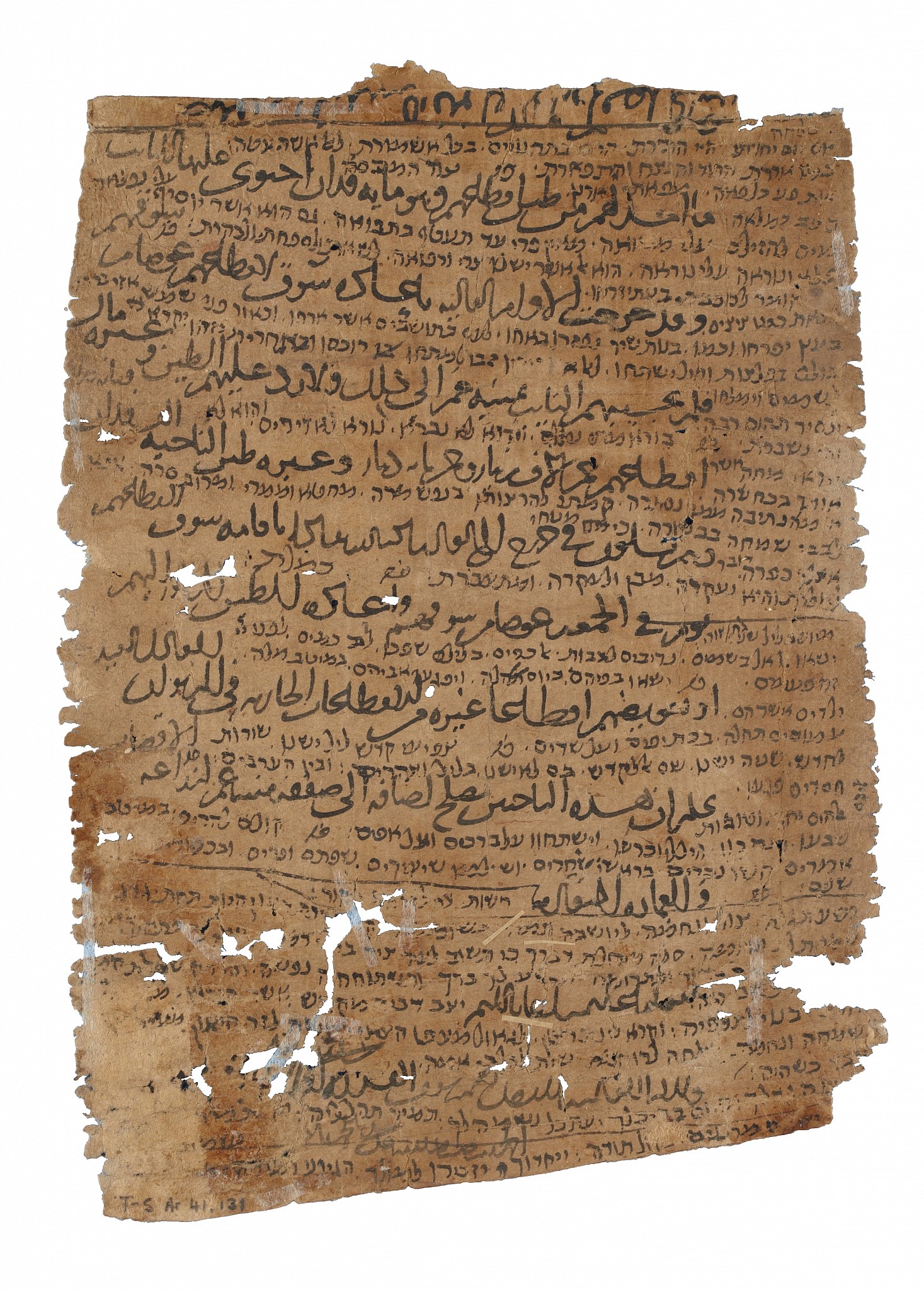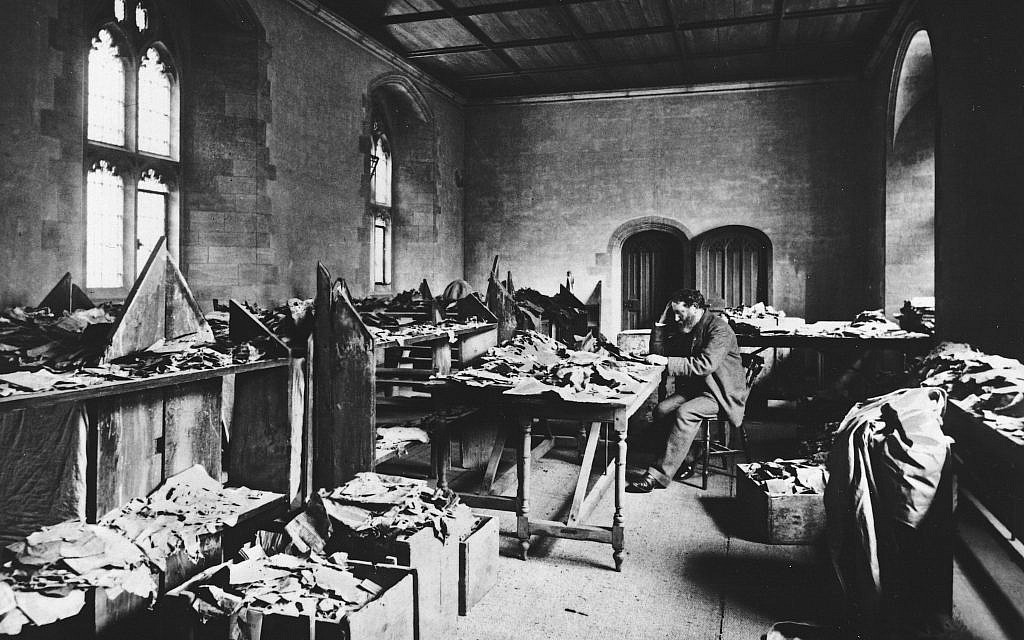Fragments of the Fatimid Caliphate
featuring Marina Rustow, Neelam Khoja, Zoe Griffith, and Fahad Bishara
| For brief period of history, the Fatimid Caliphate based in Egypt presided over arguably the most powerful empire in the Mediterranean. Yet because the legacy of this Ismaili dynasty was erased or downplayed by its Sunni rivals and successors, the Fatimids are often misunderstood. As we show in this installment of "The Making of the Islamic World," the Fatimid period and the sources that survive from it can in fact be critical to learning more about how pre-modern Islamic polities functioned, demonstrating that the Fatimids had a much more sophisticated state apparatus than some have assumed.
The statecraft of a pre-modern Islamic empire is just one of the topics we can study in the Fatimid world thanks to a rich trove of documents from the Cairo Genizah. The Genizah was a storeroom of a synagogue in Fustat that ended up containing a wealth of documents, many of them simply discarded or reused, that reveal the complexity and interconnection of the medieval Mediterranean. In this episode, we explore how scholars make use of the Genizah documents and the interconnected world stretching from Southeast Asia to Mediterranean Europe reveals in the Genizah papers. In the process, we learn about the emergence of the Fatimid Caliphate as a dynasty and state structure and the developments that took place under Fatimid rule in Cairo.

For brief period of history, the Fatimid Caliphate based in Egypt presided over arguably the most powerful empire in the Mediterranean. Yet because the legacy of this Ismaili dynasty was erased or downplayed by its Sunni rivals and successors, the Fatimids are often misunderstood. As we show in this installment of "The Making of the Islamic World," the Fatimid period and the sources that survive from it can in fact be critical to learning more about how pre-modern Islamic polities functioned, demonstrating that the Fatimids had a much more sophisticated state apparatus than some have assumed.
The statecraft of a pre-modern Islamic empire is just one of the topics we can study in the Fatimid world thanks to a rich trove of documents from the Cairo Genizah. The Genizah was a storeroom of a synagogue in Fustat that ended up containing a wealth of documents, many of them simply discarded or reused, that reveal the complexity and interconnection of the medieval Mediterranean. In this episode, we explore how scholars make use of the Genizah documents and the interconnected world stretching from Southeast Asia to Mediterranean Europe reveals in the Genizah papers. In the process, we learn about the emergence of the Fatimid Caliphate as a dynasty and state structure and the developments that took place under Fatimid rule in Cairo.
"The Making of the Islamic World" is an ongoing series aimed at providing resources for the undergraduate classroom. The episodes in this series are subject to updates and modification.
 |
Marina Rustow is a social historian of the medieval Middle East at Princeton University. She has worked extensively on the documents of the Cairo Genizah, and her published works include Heresy and the Politics of Community: The Jews of the Fatimid Caliphate (2008) and The Lost Archive: Traces of a Caliphate in a Medieval Synagogue(2020). Rustow was a 2015 recipient of the MacArthur Fellowship. |
 |
Neelam Khoja is a transregional and transdisciplinary historian; she focuses on historically marginalized communities whose networks cross imperial boundaries and national borders from the fifteenth to twentieth centuries in West and South Asia. Khoja received her doctorate degree from Harvard and is currently a Postdoctoral Associate for the Inter-Asia Connections Initiative at the MacMillan Center, Yale University. |
 |
Zoe Griffith is Assistant Professor of History at Baruch College, CUNY and completed her Ph.D. at Brown University in 2017. Her research focuses on political economy, law, and governance in the Ottoman Arab provinces from the 17th to the 19th centuries. She records mainly in New York City. |
 |
Fahad Ahmad Bishara is Rouhollah Ramazani Associate Professor of Arabian Peninsula and Gulf Studies at the University of Virginia. He specializes in the legal and economic history of the Indian Ocean and Islamic world, and is now spends his time thinking about dhows, the sea, and world history. |
Credits
Interviews by Chris Gratien
Sound production by Chris Gratien
Music (by order of appearance): Aitua - Blind Fire; Chad Crouch - Drifting; A.A. Aalto - Admin; Aitua - Volcano; Walking in Cairo; Chad Crouch - Drawing Mazes; Chad Crouch - Platformer; Chad Crouch - Taut; A.A. Aalto - Constructivism; DOAP Main Beat; A.A. Aalto - Canyon; Chad Crouch - Traction
Explore

The historiography of the medieval world was forever transformed when scholars took notice of the unassuming storeroom of a synagogue in Fustat, the old city of present-day Cairo. The storeroom or Genizah itself, filled to the brim with discarded papers, was a common feature of old synagogues. What made this trove special was the extraordinary volume and age of its contents: over 400,000 manuscripts, documents, and fragments of paper dating back to the medieval period. Beginning in the late 19th century, European libraries began acquiring and cataloguing these materials, which have revolutionized our understanding not only of medieval Judaism and Jewish communities in the Mediterranean but also the medieval world itself.
While the Genizah contained documents kept by the synagogue, as our guest Marina Rustow explains, it also contained many official state documents of the Fatimid Caliphate. Much of the Genizah material was actually discarded paper. Some documents in the Genizah were old Fatimid decrees and other documents that were subsequently used again for another purpose. Many of these documents contain lines of Arabic calligraphy with later writings scrawled in Hebrew or Judeo-Arabic in between the lines.

An Arabic document from the Cairo Genizah with Hebrew writing interspersed. Source: Cambridge University Library, T-S Ar. 41.131. Reproduced by kind permission of the Syndics of Cambridge University Library
As Rustow reveals in her new book The Lost Archive, clues about Fatimid statecraft from the Genizah have allowed us to understand the state they presided over in an entirely new light. This is just one of many reasons why the Fatimid Caliphate merits special focus in our series on "The Making of the Islamic World." Another is that the Fatimids represented the most prominent Shi'ite dynasty in the history of the medieval Islamic world. Ismailism spread through a network of da'is, figures akin to missionaries who convinced local rulers and communities to embrace their Ismaili form of Islam from the 8th century onward. The Fatimids, who claimed descent from the family of the Prophet, funded the Ismaili da'wah during a period in which Abbasid fragmentation was giving way to various local polities, many of them also representing adherents of different brands of Shi'ism.
One of the most significant impacts of the Fatimid period for the broader history of the Islamic world was the founding of Cairo as an imperial capital. Initially, Cairo was a palace city near the older city of Fustat on the Nile. However, with time, Cairo became the new center of life. The city itself has a population of around 10 million today, and its metropolitan area greatly exceeds that of any other city in the Arab world. Though the Fatimids were themselves Ismaili, the institutions they established in Cairo became central to the life of the non-Ismaili majority as well. For example, the Fatimids founded al-Azhar, which is one of the world's oldest universities and a major center of learning for the schools of Sunni jurisprudence.
Listen to our interview with Sumaiya Hamdani to learn about the Andalusi scholar Abu as-Salt, who took refuge in the Fatimid Caliphate during a period of political turmoil in Muslim Iberia.
Many of the papers from the Genizah contain letters or documents pertaining to trade, and they reveal an extraordinary degree of interconnection between the Indian Ocean world and the Mediterranean. A trade network centered on the port of Aden (modern-day Yemen) brought goods from as far east as China and the Malabar Coast of modern-day India. Thanks to the Genizah collection, the commercial affairs of the mercantile communities that moved within these spaces can be studied in great detail by historians.
There is much to be learned from the Genizah documents even by those who cannot read the writing in Hebrew and Arabic. The Cambridge Digital Library contains a well-catalogued collection of Genizah documents. Browsing the summaries and material details of the Genizah documents is itself a rewarding activity, and students seeking a glimpse of life in the Fatimid world can easily search the catalog for almost any topic. There is no excuse for anyone interested in the medieval Islamic world to neglect the fascinating contents of the Genizah documents catalog!

Solomon Schechter examining Genizah documents at Cambridge University. Source: Times of Israel
To learn more about the Fatimid Caliphate, we recommend the following works.
FURTHER READING
Andani, Khalil. 2016. "A Survey of Ismaili Studies Part 1: Early Ismailism and Fatimid Ismailism". Religion Compass. 10, no. 8: 191-206.
Ghosh, Amitav. In an Antique Land. London: Granta, 2010.
Goitein, Shelomoh Dov, and Mordechai Akiva Friedman. India Traders of the Middle Ages Documents from the Cairo Geniza ('India Book'). Leiden: Brill, 2011.
Khan, Geoffrey. Arabic legal and administrative documents in the Cambridge Genizah collections. Cambridge: Press Syndicate of the University of Cambridge, 1993.
Pruitt, Jennifer. "Method in Madness: Reconsidering Church Destructions in the Fatimid Era" in Muqarnas, 2013. Edited by Gülrü Necipoğlu.
Rustow, Marina. Heresy and the Politics of Community: The Jews of the Fatimid Caliphate. Ithaca: Cornell University Press, 2014.
_____. The Lost Archive: Traces of a Caliphate in a Cairo Synagogue. 2020.
Walker, J., “Sitt al-Mulk”, in: Encyclopaedia of Islam, First Edition (1913-1936), Edited by M. Th. Houtsma, T.W. Arnold, R. Basset, R. Hartmann.
Walker, Paul E. Exploring an Islamic Empire: Fatimid History and Its Sources. London: I.B. Tauris, 2002.
_____. Fatimid History and Ismaili Doctrine. Aldershot: Ashgate, 2008.
 |
Chris Gratien is Assistant Professor of History at University of Virginia, where he teaches classes on global environmental history and the Middle East. He is currently preparing a monograph about the environmental history of the Cilicia region of the former Ottoman Empire from the 1850s until the 1950s. |









Comments
Post a Comment
Due to an overwhelming amount of spam, we no longer read comments submitted to the blog.